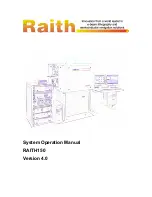
Figure 3.6: Aliasing
In figure
, the green input signal (top) is a triangular signal
with a frequency of 1.25 kHz. The signal is sampled with a fre-
quency of 1 kHz. The corresponding sampling interval is 1/1000Hz
= 1ms. The positions at which the signal is sampled are depicted
with the blue dots. The red dotted signal (bottom) is the result
of the reconstruction. The period time of this triangular signal
appears to be 4 ms, which corresponds to an apparent frequency
(alias) of 250 Hz (1.25 kHz - 1 kHz).
To avoid aliasing, always start measuring at the highest sam-
pling frequency and lower the sampling frequency if required.
3.4
Digitizing
When digitizing the samples, the voltage at each sample time is
converted to a number. This is done by comparing the voltage
with a number of levels. The resulting number is the number cor-
responding to the level that is closest to the voltage. The number
of levels is determined by the resolution, according to the following
relation:
LevelCount
= 2
Resolution
.
Introduction
11
Summary of Contents for Handyscope TP450
Page 1: ...Handyscope TP450 User manual TiePie engineering ...
Page 4: ...7 11 Measure lead 27 7 12 Package contents 28 II ...
Page 6: ...2 Chapter 1 ...
Page 18: ...14 Chapter 3 ...
Page 24: ...20 Chapter 4 ...
Page 28: ...24 Chapter 6 ...
















































